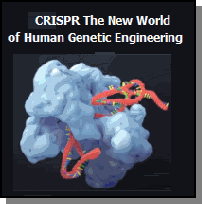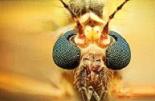|
What is Crispr in layman's terms?
CRISPR is a technology that can be used to edit genes and, as such, will likely change the world. The essence of CRISPR is simple: it's a way of finding a specific bit of DNA inside a cell. ... However, CRISPR has also been adapted to do other things too, such as turning genes on or off without altering their sequence.
How is Crispr being used today?
Here are the 7 craziest ways CRISPR is being used today: Full Article at OneZero, click icon.
1. Turning pigs into organ donors
2. Making new and improved fruit
3. Changing flowers from violet to white
4. Modifying human embryos
5. Halting muscular dystrophy in dogs
6. Creating new treatments for cancer and blood disorders
7. Eliminating mosquitoes
Creating new treatments for cancer and blood disorders. Injecting CRISPR directly into the body is risky, so for now, investigators are using CRISPR to edit human cells outside the body and then infusing them back into patients. The approach is being used in early clinical trials in the U.S., Europe, and China.
**Modifying human embryos
Last year, a scientist in Oregon made headlines when he reported that his team used CRISPR to snip out a heart disease-causing genetic error in dozens of human embryos. It was the first time CRISPR had been used in the U.S. to modify human embryos. The experiment was for research purposes only, and none of the embryos were implanted into a woman's uterus with the intention of creating a pregnancy.
Note added by Alice A McCabe: With all the human trafficking and women missing, I believe they are doing this type of embryo implants, it is done in secret, just like all the experiments done in secret throughout history.
Continued:
Shoukhrat Mitalipov, who directs the Center for Embryonic Cell and Gene Therapy at Oregon Health and Science University, zeroed in on a mutation in a gene called MYBPC3 which is responsible for an inherited heart condition called hypertrophic cardiomyopathy. The condition occurs in about 1 in 500 people and can cause heart failure and sudden death.
"Every generation on would carry this repair because we've removed the disease-causing gene variant from that family's lineage," Mitalipov said in a university statement.
Editing cells in embryos is known as germline editing, and is controversial because the genetic changes that result can be passed on to subsequent generations. That's different than somatic genome editing, which only affects the treated individual.
Japan may soon move forward with similar research. The country has issued draft guidelines allowing human embryos to be modified with CRISPR and other genome-editing technologies. If adopted, "the guidelines would restrict the manipulation of human embryos for reproduction, although this would not be legally binding," according to an October 2018 report in the journal Nature.
But science is far from using CRISPR to make designer babies -- at least in the U.S. That's because a congressional rider forbids the U.S. Food and Drug Administration (FDA) from even considering any human trials that would involve modifying human embryos.
Watch Documentary: Human Nature on Netflix.
**Changing flowers from violet to white
I sure hope we are not paying for this research! Did they take a page out of Alice in Wonderland's painting the roses white, no red?
Who owns Crispr?
These companies include Intellia Therapeutics and its parent company, Caribou Biosciences (Berkeley), CRISPR Therapeutics and ERS Genomics (Emmanuelle Charpentier), and Editas Medicine (Broad) as well as the Broad Institute itself.
Who owns Crispr Now? Recent Patent news and fight for rights of CRISPR click Synbiobeta.
Who discovered CRISPR? Wikipedia has the information, worth a read over! Click Wikipedia.
Continuing CRISPR Patent Disputes May Be Usurped by Its Potential Role in Fighting Global Pandemics Read by clicking here.
|
|















